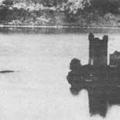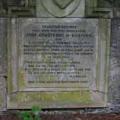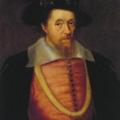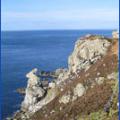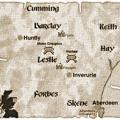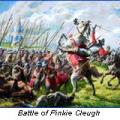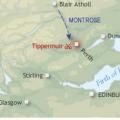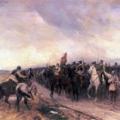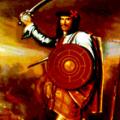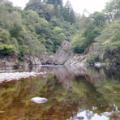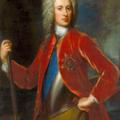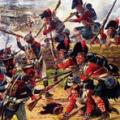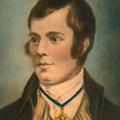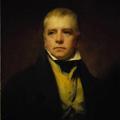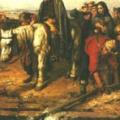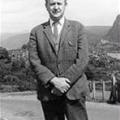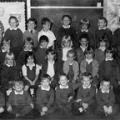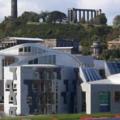Categories
Most Liked
Posted on July 17, 2013
by Amanda Moffet
by Amanda Moffet
Posted on May 12, 2013
by Chas Mac Donald
by Chas Mac Donald
Posted on August 29, 2013
by Amanda Moffet
by Amanda Moffet
Posted on February 7, 2013 by Donald | 3 views | comments
Returning to Iona from his mission to Christianise the Picts, Saint Columba approached one of the crossing points of the River Ness. There was a small settlement here, and a group of people were digging a grave for a newly dead man. When Columba asked how the man had died he was told he had been kil...
Posted on February 7, 2013 by Donald | 3 views | comments
The Armstrong Clan has been without a chief for over 450 years, the story behind this is one laced with intrigue, murder, piracy and even hidden treasure. The stuff movies are made from.
The story is set around Johnnie Armstrong of Gilnockie and the Border Reivers in the 16th Century. Johnnie Arm...
Posted on February 7, 2013 by Donald | 3 views | comments
James VI and I was King of Scots, King of England, and King of Ireland and was the first to style himself King of Great Britain. He ruled in Scotland as James VI from 24 July 1567. Then from the 'Union of the Crowns', in England and Ireland as James I, from 24 March 1603 until his death. He was t...
Posted on February 6, 2013 by Donald | 2 views | comments
Magnus Barefoot (or Barelegs) came to the throne of Norway in 1093.
Like his countrymen he enjoyed the conquest of other countries. In 1098 he drew up the first formal treaty with a Scots king, Edgar, confirming in writing that all the Western Isles and the peninsula of Kintyre belonged to Norway.
...
Posted on February 6, 2013 by Donald | 2 views | comments
This battle, regarded by many today as the conflict between Highlanders and Lowlanders which killed the expansion of Gaelic influence, was one of the most brutal in Scottish history, becoming known as ‘Red Harlaw’.
While James I was growing up in English jails, Donald, Lord of the Isles made it his...
Posted on February 6, 2013 by Donald | 2 views | comments
The Battle of Pinkie, on the banks of the River Esk on 10 September 1547, was another catastrophic waste of life encouraged by lack of discipline and weak command.
The Duke of Somerset brought his troops, cavalry and guns to the area, with naval support for his sixteen thousand men having to make...
Posted on February 6, 2013 by Donald | 2 views | comments
In the August of 1644 James Graham, 1st Marquis of Montrose, combined his force of cavalry and Highland foot soldiers with Alasdair MacDonald's Irish soldiers to begin a campaign against the Covenanters for Charles I.
Their first target for reclamation was Perth, and on the 1st September they arr...
Posted on February 6, 2013 by Donald | 2 views | comments
The Calvinists were in support of Charles II when he became King and signed both the Covenants in 1649. Cromwell, however, was not. With sixteen thousand men he invaded Scotland in July and headed for Edinburgh, expecting to rendezvous with his supply ships at Leith. David Leslie and the Scots arm...
Posted on February 6, 2013 by Donald | 2 views | comments
Born in 1671 at Loch Katrine, the third son of a Lieutenant-Colonel, MacGregor’s inherited long arms and great strength gave him abilities with the broadsword that made his name known to many. He fought at Killiecrankie for Viscount Dundee in 1689 before joining the Lennox Watch.
When the name Ma...
Posted on February 6, 2013 by Donald | 2 views | comments
Near Pitlochry in Perthshire is the Pass of Killiecrankie, a gorge with a six feet wide riverside track.
News came to Jacobite leader Viscount Dundee, John Graham of Claverhouse, that General Hugh MacKay would be moving his men from Stirling to Blair Castle. Dundee, known by his supporters as Bon...
Posted on February 6, 2013 by Donald | 2 views | comments
The crowns of Scotland and England had become one in 1603 and Cromwell had tried to bind the countries’ political systems together fifty years later, but Scotland still wanted to govern its own religious, financial and political affairs.
The eighteenth century began for Scotland with financial ru...
Posted on February 6, 2013 by Donald | 2 views | comments
One of the world’s most famous militia was first raised in 1725 and became a Regiment under the Earl of Crawford as Colonel in 1739.
Known then as the 43rd then 42nd Royal Highland Regiment, its Gaelic motto translated into ‘The Black Watch of Battles, First to Come and Last to Go’.
The Black Wat...
Posted on February 6, 2013 by Donald | 2 views | comments
Robert Burns was born in Alloway, Ayrshire on 25 January 1759.
His father was a gardener and tenant farmer, and the life he was brought up in made him acutely aware of society’s unfairness as he laboured hard yet lived in poverty.
In 1786 he published 612 copies of Poems, Chiefly in the Scottish...
Posted on February 6, 2013 by Donald | 2 views | comments
Novelist and poet Sir Walter Scott was born in 1771 in Edinburgh, one of six surviving infants from twelve.
At eighteen months he took ill with poliomyelitis but pulled through although with a lame right leg. He was well educated, studying at Edinburgh University. In 1792 he was admitted to the F...
Posted on February 6, 2013 by Donald | 2 views | comments
The clan system regarded the land as belonging to their community, worked areas being passed down through the family while additional lands could be rented. As the generations passed, the clan chiefs became more wealthy and detached from their kinsmen, regarding them as their effects rather than t...
Posted on February 6, 2013 by Donald | 2 views | comments
Sorley MacLean (Scottish Gaelic: Somhairle MacGill-Eain, sometimes "MacGilleathain" in earlier publications) was born at Osgaig on the island of Raasay on 26 October 1911. At that time on Raasay, which lies between the Isle of Skye and the Scottsih Mainland, Gaelic was the first language.
His gra...
Posted on February 6, 2013 by Donald | 2 views | comments
Wednesday 13th March 1996 should have been a normal school day for the children of Dunblane Primary School. Tragically it was not.
On that morning unemployed former shopkeeper Thomas Hamilton walked unchallenged into the school armed with two 9mm Browning HP pistols and two Smith and Wesson .357 ...
Posted on February 6, 2013 by Donald | 2 views | comments
After the success of the Referendum in 1997 the First Minister Donald Dewar announced a competition for the design of Scotland's new parliament building. The winner was the design of Catalan architect, Enric Miralles.
His adventurous design with leaf shaped buildings and upturned boat style skyli...
Featured Articles
Most Discussed
Posted on July 16, 2013
by Amanda Moffet
by Amanda Moffet
Posted on February 6, 2013
by Donald
by Donald
Posted on July 17, 2013
by Amanda Moffet
by Amanda Moffet


 View More
View More View Less
View Less